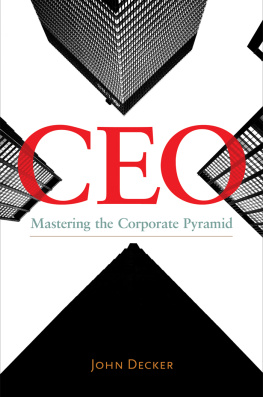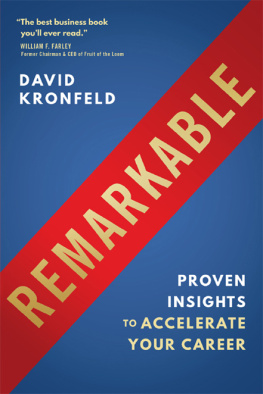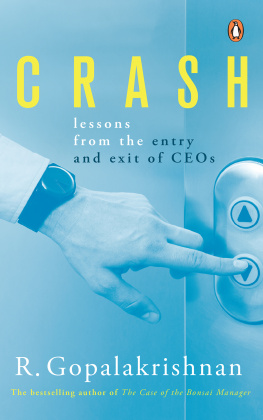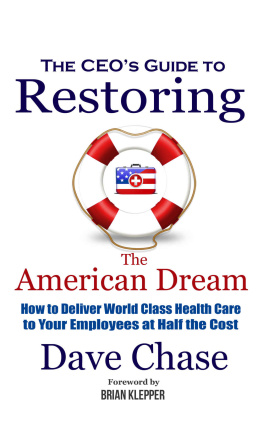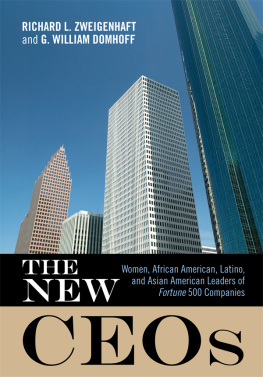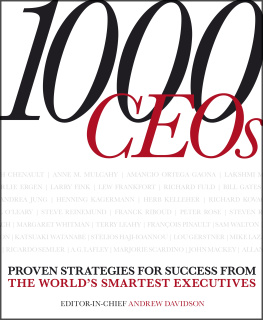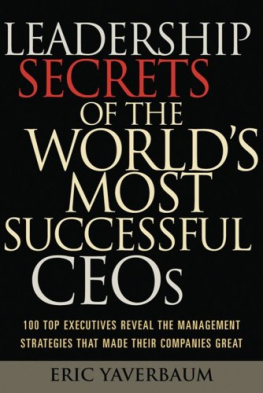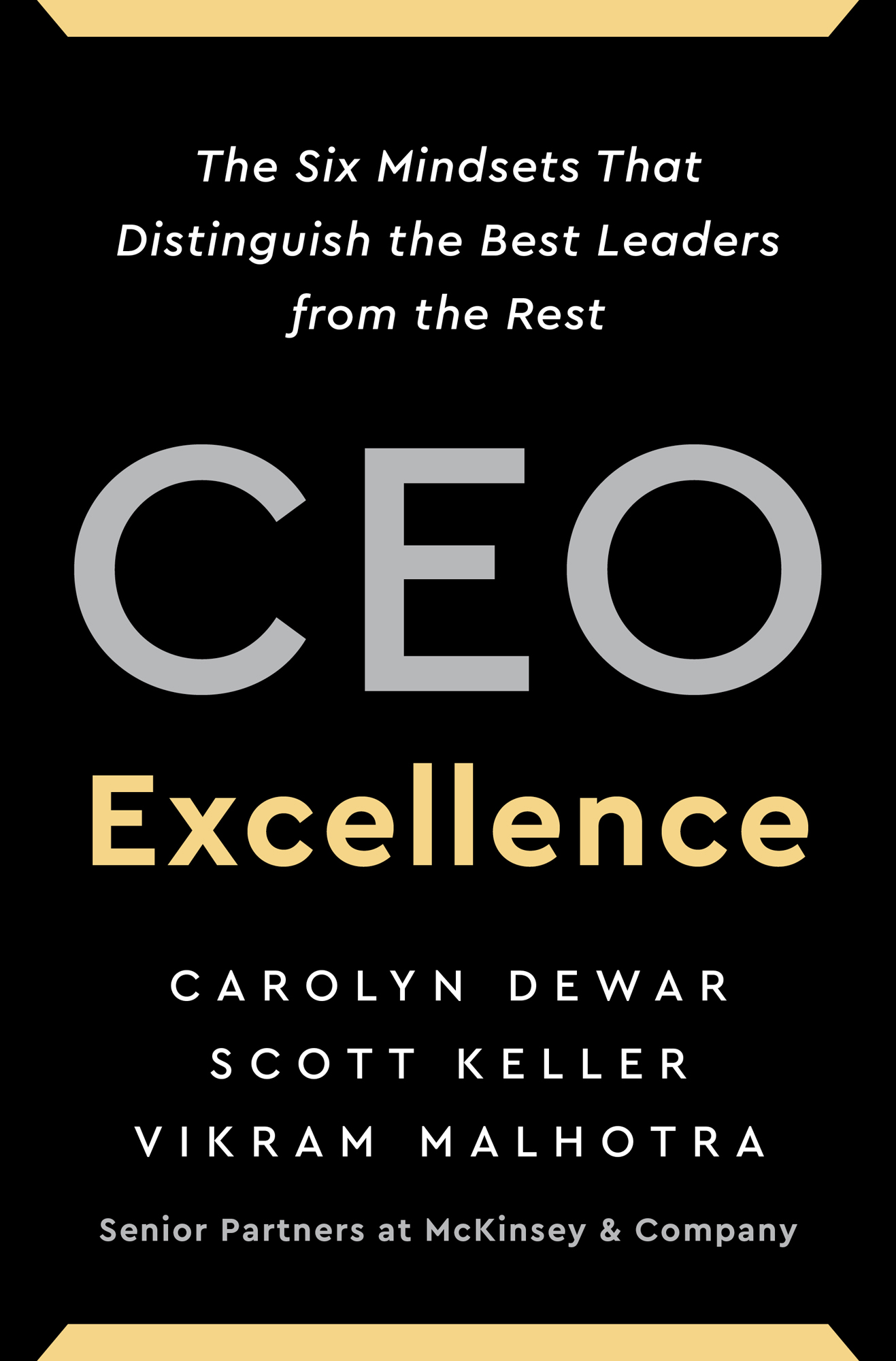Contents
Guide
The Six Mindsets That Distinguish the Best Leaders from the Rest
CEO Excellence
Carolyn Dewar, Scott Keller and Vikram Malhotra
Senior Partners at McKinsey & Company

Scribner
An Imprint of Simon & Schuster, Inc.
1230 Avenue of the Americas
New York, NY 10020
www.SimonandSchuster.com
Copyright 2022 by McKinsey & Company, Inc.
All rights reserved, including the right to reproduce this book or portions thereof in any form whatsoever. For information, address Scribner Subsidiary Rights Department, 1230 Avenue of the Americas, New York, NY 10020.
First Scribner hardcover edition March 2022
SCRIBNER and design are registered trademarks of The Gale Group, Inc., used under license by Simon & Schuster, Inc., the publisher of this work.
For information about special discounts for bulk purchases, please contact Simon & Schuster Special Sales at 1-866-506-1949 or .
The Simon & Schuster Speakers Bureau can bring authors to your live event. For more information, or to book an event, contact the Simon & Schuster Speakers Bureau at 1-866-248-3049 or visit our website at www.simonspeakers.com.
Jacket design by Pete Garceau
Library of Congress Cataloging-in-Publication Data has been applied for.
ISBN 978-1-9821-7967-0
ISBN 978-1-9821-7969-4 (ebook)
To Thomas, Gray, and Evening Czegledy Fiona, Lachlan, Jackson, and Camden Keller Mary, Malu, Devan, and Nik Malhotra
And to our Partners and Colleagues at McKinsey & Company for giving us the opportunity to continue the search for excellence
Introduction
Excellence is never an accident.
Aristotle
At the annual Leadership Forum hosted by McKinsey & Company in the picturesque waterfront town of St. Michaels, Maryland, thirty soon-to-be CEOs were gathered in the conference room. On this rainy fall evening, the retreats first day, everyone snapped to attention as the moderator, Vik (one of your coauthors), posed an intriguing question: What does a CEO really do?
Without pause, the first guest speaker, a chief executive of one of the worlds largest technology companies, responded, I can say with confidence that the role of the CEO boils down to He then expanded on each of three items with conviction and clarity. At the end of the night, everyone left feeling a mysterious veil had been lifted.
That is, until the following mornings speaker, the leader of a multinational financial services company, answered Viks same question. The guest articulated what she viewed as the three primary roles for a CEO, punctuating each with potent, reinforcing examples. They were an altogether different set than offered by the first nights speaker. That evening, the third and final CEO speaker, leader of one of the worlds most prestigious academic medical centers, presentedyou guessed ityet another categorically different list of the three most important aspects of the CEO role.
The next morning Scott and Carolyn (your two other coauthors) brought the retreat to a close, doing their best to crisply summarize the key takeaways. On the subsequent hour and a half drive to the nearest major airport, the three of us discussed how starkly different each guest speakers list had been. We guessed that if wed had a fourth speaker, wed have yet another take on the CEO role. We all agreed that each piece of advice raised by our speakers was important and helpful, but in aggregate, the information felt disjointed.
It was unsettling. As CEO counselors, we know that how a person performs in the CEO role matters. CEOs who rank in the top 20 percent of financial performance generate, on average, 2.8 times more total return to shareholders (TRS) during each year of their tenure than do average performers. More concretely, if you invest $1,000 in a Standard and Poors (S&P) 500 index fund and over ten years your investment grows at historical averages, your investment will make you just under $1,600. If you invest in the companies led by the top quintile highest performing CEOs, youll gain more than $10,000. Thats a big difference.
Whats more, the extent to which a CEO is a significant predictor of a companys performance has more than doubled since the mid-twentieth century. This CEO effect will undoubtedly become even more important in an increasingly volatile, uncertain, complex, and ambiguous world, one in which stakeholder capitalism is on the risecalling leaders to move far beyond Milton Friedmans notion that companies exist solely to create profits for shareholders. In fact, the actions of todays companies will likely have more impact on societal issues such as the environment, health care, wealth inequality, and human rights than those of governments and charitable organizations.
By the time we got to the airport the three of us decided to work together to definitively answer the question: What does a CEO really do? That knowledge in itself would be extremely valuable. But we wanted to go beyond that, to find out how the best CEOs work differently from the rest and why. This would mean getting deep inside the minds of those who truly excel in the role.
Such an effort, we felt, would be welcomed by CEOs and their many stakeholdersboards, investors, employees, regulators, customers, suppliers, and communities. After all, in the past two decades, 30 percent of Fortune 500 CEOs have lasted less than three years, with two out of five new CEOs failing in their first eighteen months on the job. These leaders could certainly have benefited from a primer on what the role entails and that includes lessons gleaned from the best.
By all counts the role is also getting harder. Todays CEOs have to navigate far more than the traditional running of the business. They must deal with the exponentially accelerating pace of digital transformation and the workforce retraining and cybersecurity challenges that come with it. Leaders need to pay more attention to their employees health and well-being, racial diversity, and feelings of inclusion. Concerns around sustainability, the public desire for more purpose-driven organizations, and calls for CEOs to be spokespeople on broad societal issues are all on the rise. Leaders must not only hear those calls but be prepared for a level of public scrutiny and activism that is driven by social media and can spark outrage (rightly or wrongly) within a matter of hours.
As a result, the probability that a CEO will crash and burn is now higher than ever. From 2000 through 2019, the average CEO tenure in the United States decreased from ten years to less than seven. It goes to show that even when theres a stable economy buoying bottom lines, the challenges to contend with at the top can be overwhelming. Add to this the reality that, as General Motors chief executive Mary Barra told us, Becoming a CEO is unexpectedly lonely. Ive always had a regular dialogue with whoever my leader was, and all of a sudden, you dont have a leader to go to.
Of course, most of the problems faced by large, public company CEOs arent substantively different from those faced by other leaderswhether theyre running a small business or a nonprofit. Insights from the best CEOs running large companies, we felt, would be helpful for just about anyone. Bolstering that belief was the popularity of an article that Scott and Carolyn published on McKinseys website in the fall of 2019, The Mindsets and Practices of Excellent CEOs, which quickly became one of the most read articles of the year and has remained in the top ten ever since.


